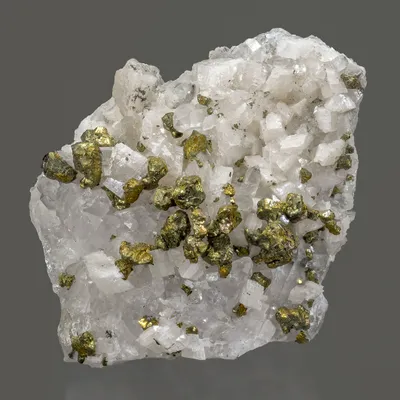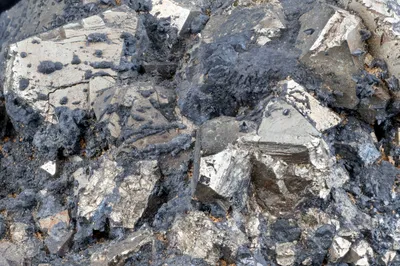Mineral Species
Mawsonite
Type Locality
No
Composition
Cu1+6Fe3+2Sn4+S8
Crystal System
Tetragonal
Status at Tsumeb
Confirmed
Abundance
Very rare
Distribution
Second oxidation zone; sulphide ores
Paragenesis
Hypogene
Entry Number
Species; TSNB233
General Notes
Mawsonite is remarkable for its unusual chemistry, as a copper, iron and tin-bearing sulphide and is one of very few tin-bearing minerals recorded at Tsumeb. Mawsonite, (IMA 1964-030) was described from two Australian type localities by Markham and Lawrence (1965), coinciding with a period of detailed studies of ore mineralogy at Tsumeb by TCL mineralogist Bruno Geier and co-workers, many of the findings from which were recorded only via internal memoranda (Aubrey Paverd, pers. comm. to M. Southwood, June 2020).
In 1953, Geier demonstrated that the majority of the "orange bornite" observed at Tsumeb corresponded to the recently described mineral renierite (unpublished TCL Report, cited by Geier and Ottemann 1970b). It was clear, however, that other occurrences of "orange bornite" at Tsumeb did not match the renierite chemistry.
Geier and Ottemann (1970a) listed six sulphide minerals from Tsumeb with unusual chemistry, containing various combinations of gallium, germanium, tin or vanadium. They assigned "working names" to four of these minerals, one of which was feuermineral [= fire mineral], in allusion to its bright red anisotropy under partly crossed nicols, for which they provided chemical analyses and optical data. They noted that feuermineral was the first tin-bearing mineral recorded from Tsumeb and that it occurred as "… extremely small grains (a few microns)" in sulphide ore from 30 Level. Below 30 Level they observed a slight increase in abundance "…but the mineral is still negligible in amount and the distribution is sporadic."
Further studies, reported by Bartelke (1976), concluded that feuermineral was a "germanium-zinc mawsonite", of composition (Cu,Ge)7(Fe,Zn)2(Sn,As)S10. Indeed, the average of three EMPA analyses for feuermineral provided by Geier and Ottemann (1970a) based on 10 sulphur atoms yields an empirical formula of Cu6.5Ge0.4Fe1.8Zn0.3Sn0.6As0.3S10, (ideally (Cu,Ge)7(Fe,Zn)2(Sn,As)S10) which, under current IMA nomenclature rules would best be described as a Ge- and Zn-rich mawsonite.
Keller (1984) noted the occurrence of mawsonite at Tsumeb and observed that it is sometimes germanium-bearing. He stated that it is similar in colour to renierite and bornite and, like renierite, it is magnetic.
"Germanian mawsonite" is recorded as a "rare/very rare" mineral at Tsumeb in the list of species provided by Lombaard et al. (1986). However, in a separate tabulation (their Table IV) they list "germanian mawsonite" among "… common minerals [occurring] in minor or trace amounts". There is no mention of "mawsonite" (i.e., without the adjectival modifier).
Gebhard (1999) considered mawsonite rare at Tsumeb, and noted that it is one of only two tin-bearing sulphides found at the locality (the other being stannite). He noted that both tin minerals are germanium enriched.
The mode of occurrence of mawsonite as minute inclusions in other sulphide minerals means that it can only be observed by reflected light microscopy or electron microscopy and as such it is unlikely to be of interest to most mineral collectors.
Associated Minerals
bornite; briartite; chalcocite; chalcopyrite; gallite; germanite; pyrite; renierite; stannite; tennantite-(Zn)




